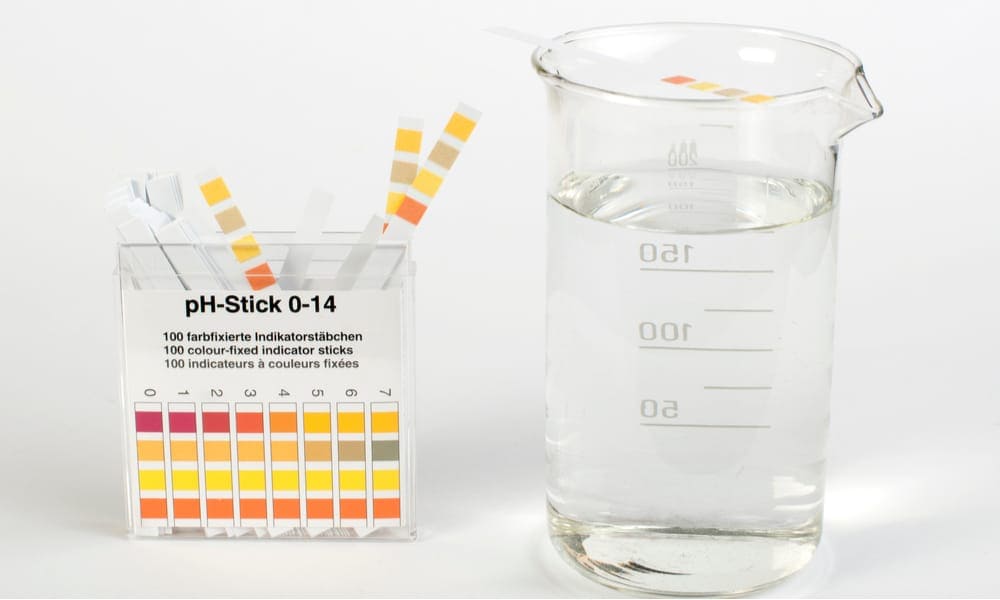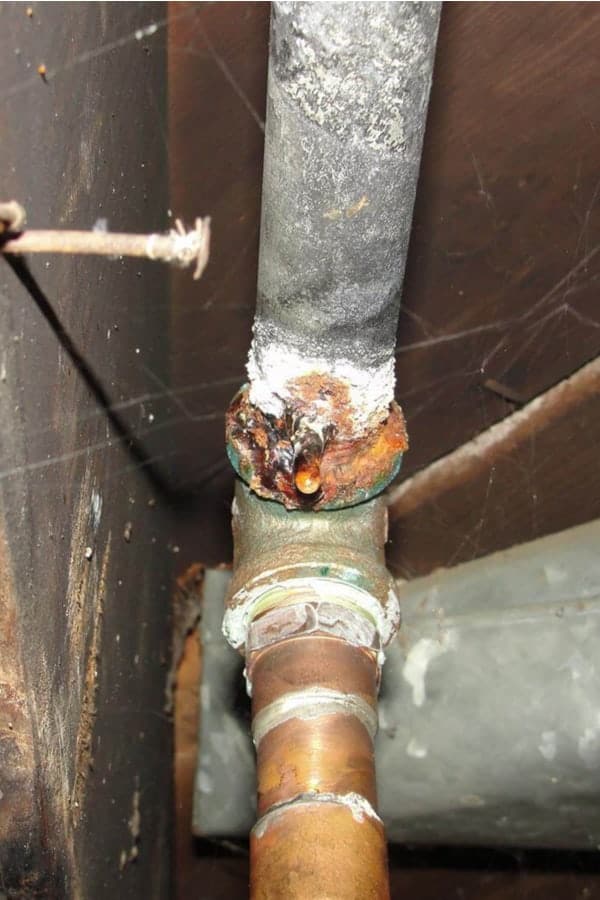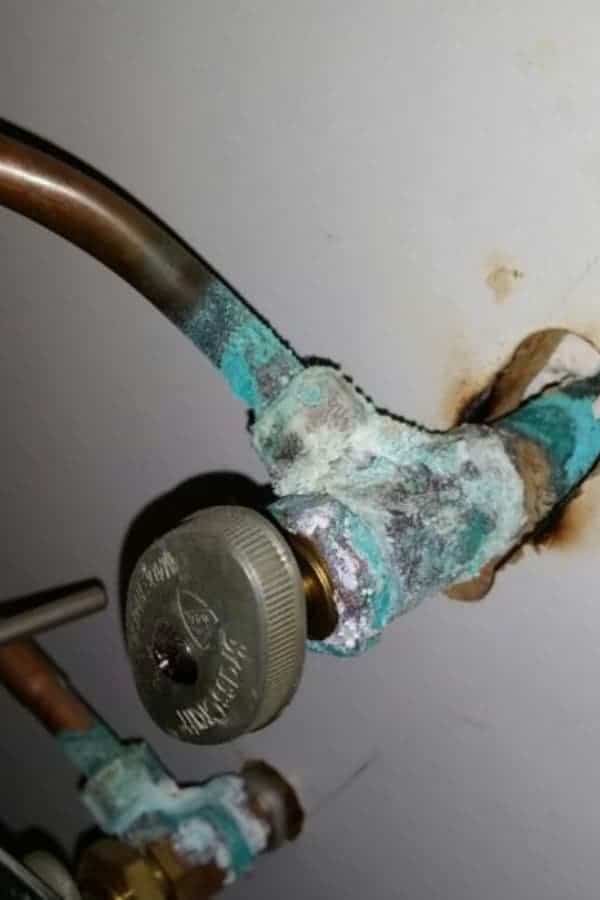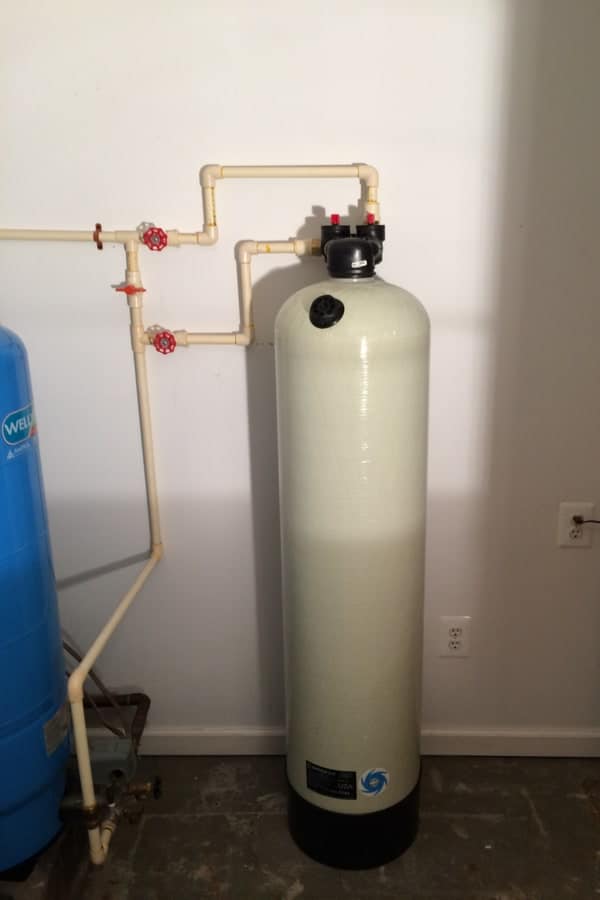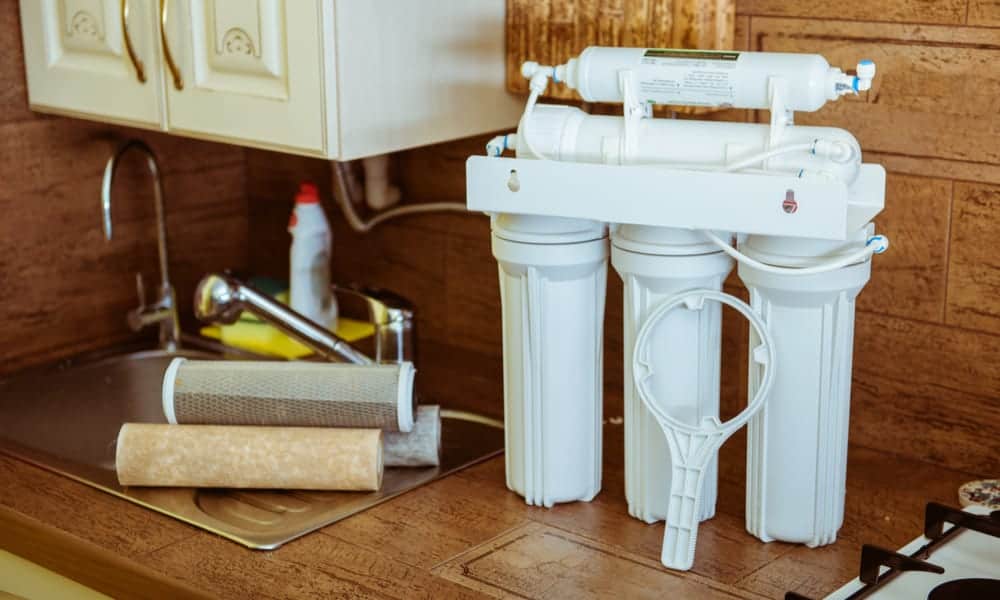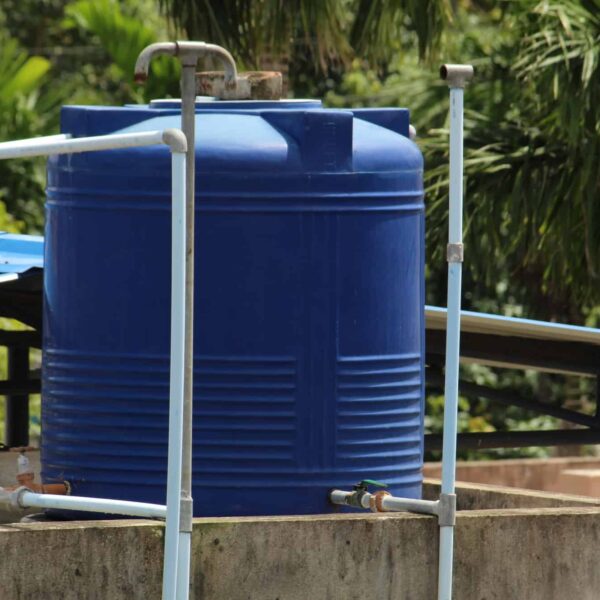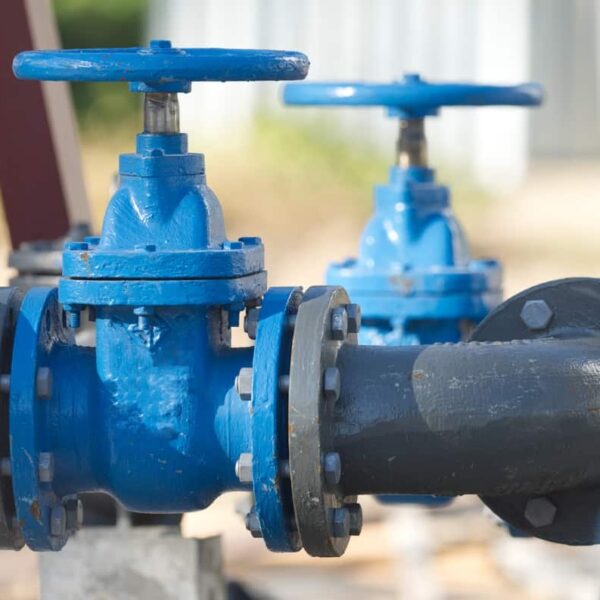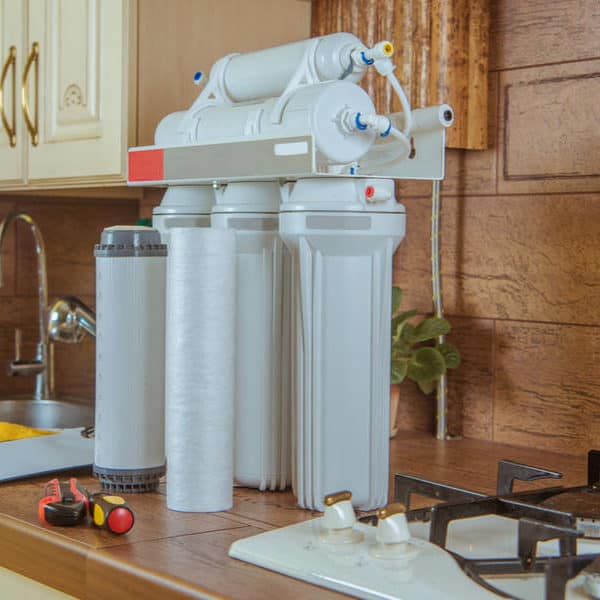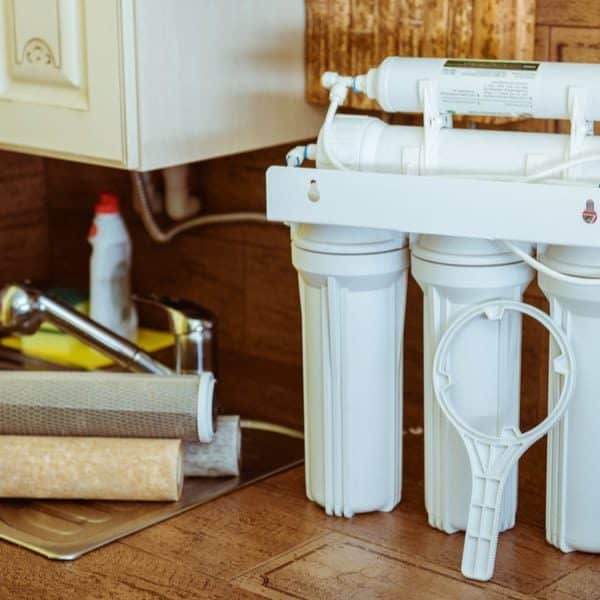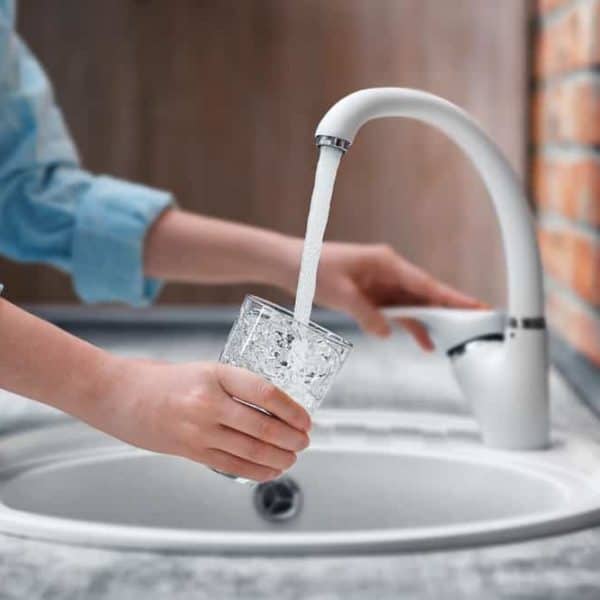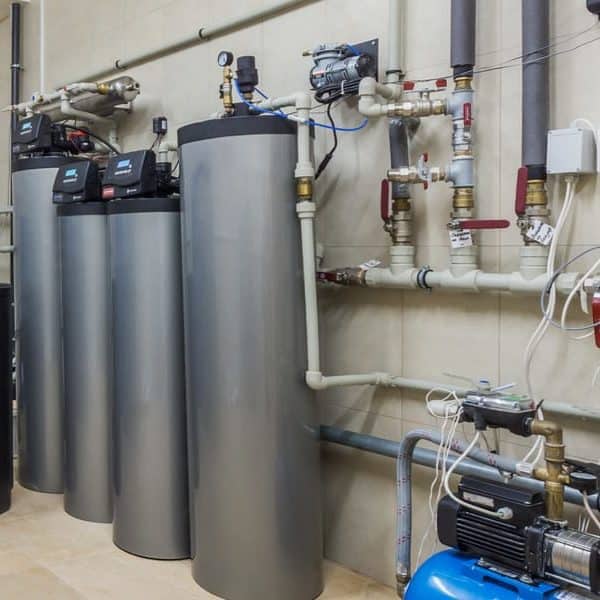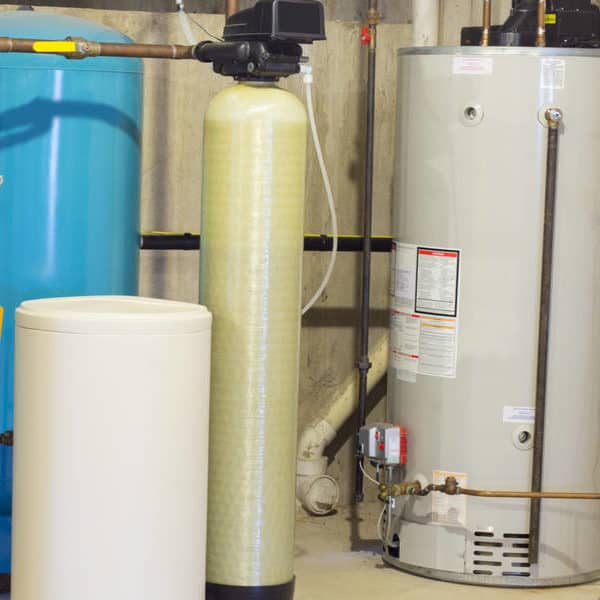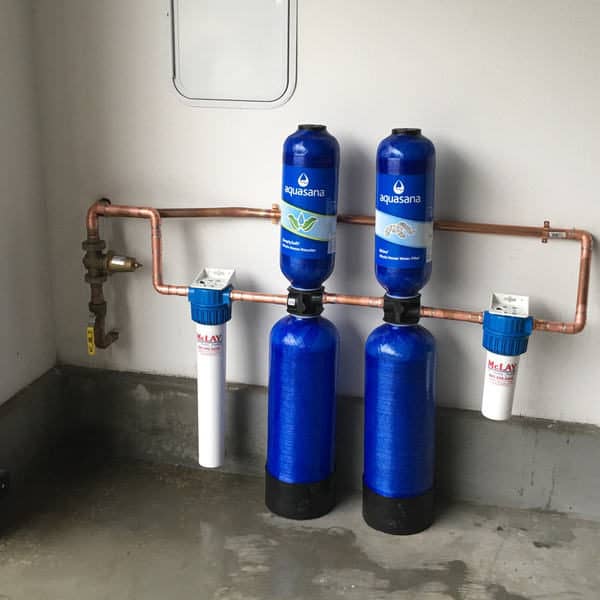Water is essential to life, and human beings can’t survive without water for more than a few days. Thankfully, most of us have easy access to a constant supply of water just by opening the kitchen faucet and filling a glass.
However, the chemical properties of water vary depending on where you live, and some areas may have what is known as acidic water. What is acidic water? What causes it? And what can you do about it? Here, we look at these questions and more.
If you want a preview of some of the stuff we’re going to be talking about, you can check out this video before reading on.
what is acidic water?
Let’s start with the basic question – what is acidic water? To answer this question, we’ll need to think back to our school days and the time we spent in chemistry class.
As you may remember, acidity is measured on the pH scale. pH stands for “potential hydrogen”, and it measures the amount of hydrogen mixed in the water.
The pH scale runs from 0 to 14. Anything below 7 is an acid while everything above 7 is a base. A pH level of exactly 7 is pH neutral.
Like the Richter scale for earthquakes, the pH scale is logarithmic, which means that a pH of 5 is 10 times more acidic than a pH of 6 – and a pH of 4 is 100 times more acidic than a pH of 6.
Similarly, a pH of 9 is ten times more basic than a pH of 8, and a pH of 10 is 100 times more basic than a pH of 8.
To give you an idea of the acidity of some common foods, coffee has a pH value of about 4.5-6, so it slightly acidic – and lemon juice has a pH value of around 2-3, making it more acidic than coffee. On the other hand, eggs have a pH value of around 9, making them slightly basic.
So far so good?
If you want more information about pH levels, acids and bases, you can check out this video before you continue.
How about water?
Pure, distilled water theoretically has a pH level of 7. However, when it comes into contact with air, it mixes with carbon dioxide. This creates carbonic acid, which lowers the pH level to somewhere between pH 5.6-7 – and water with a pH level below 7 can be called acidic water.
In nature, water goes through what is known as the hydrological cycle. Water from rivers, lakes and the oceans evaporates and rises into the sky as water vapor to form clouds.
When it falls again as precipitation in the form of rain or snow, it mixes with carbon dioxide in the atmosphere, which again forms carbonic acid. Rainwater naturally has a pH of around 5.6.
What happens next depends on the geology of where the rain falls.
If it falls in calcium-rich areas, the minerals dissolve in the water, raising the pH level.
However, if it falls on metamorphic or igneous rocks that lack calcium, the level of acidity will remain the same.
This means if you live in a calcium-rich area, your water is not likely to be highly acidic. However, in other areas, the pH level of your water may be lower.
If you want a more detailed introduction to the hydrological cycle, you can check out this video.
Can acidic water make you sick?
In itself, acidic water is not necessarily harmful to your health. For example, carbonated (sparkling) water contains carbon dioxide that has either dissolved in the water naturally or is injected artificially.
As in nature, this creates carbonic acid, making the water acidic – carbonated water can have a pH level of around 3-4, making it more acidic than coffee but less acidic than lemon juice, and none of these are harmful to health.
In fact, in many cases, acidic water is preferable.
When used for washing your face, acidic water can help improve your complexion as it is a natural astringent and can help reduce dry skin. It is also great for your scalp and will leave your hair looking soft and shiny.
It is good for washing cuts, grazes and insect bites and will help the healing process as it has slightly antiseptic properties.
Acidic water is also good for washing food since it will help kill fungus and bacteria, and some plants prefer acidic water, so it will allow them to thrive.
However, problems arise when acidic water comes into contact with your plumbing system as well as with other metals in the environment.
Heavy metals
Acid water is corrosive, and the more acidic it is, the more corrosive it is. This means it is likely to carry more dissolved toxic metals like iron, manganese, zinc, copper and lead than less acidic water
Human consumption of these metals can lead to a range of health issues. For example, consumption of copper and zinc can lead to nausea, vomiting and diarrhea.
Continued ingestion of copper over time can also cause gallstones, kidney stones and neurological damage.
Lead is even more dangerous. In children, it can lead to cognitive problems, issues with memory, stunted growth and more. In adults, it can cause a range of issues, including birth defects and cancer.
This means you will want to be aware of the acidity of the water coming into your home.
Plumbing issues
Due to its corrosive nature, water that is too acidic can cause problems in your plumbing system, too.
For example, it can corrode your pipes, leading to pinhole leaks. If your pipes start leaking in places where you can’t see them, this can lead to structural damage to your home – and this kind of damage can be extremely expensive to repair.
Acidic water can also damage water heaters and other household appliances – the corrosive properties of acidic water are amplified when the water is heated.
So, again, for all these reasons, you will want to know if the water in your plumbing system is acidic.
How do I know if I have acidic water?
One indication that you have acidic water in your home is if you see blue stains on copper fixtures or copper pipes.
Another tell-tale sign is blue or green stains in bathtubs or basins.
Sometimes, you may also be able to detect a sharp smell or the odor of chlorine at the tap.
If you detect any of these signs of acidic water, it is advisable to test the water – if you are finding stains and discolorations on the fixtures you can see, you can only imagine what’s going on in the pipes you can’t see.
Testing is easy – you just need to buy an acid testing kit, which are available in many department stores, plumbing centers or online.
What can I do about it?
According to EPA guidelines, tap water should have a pH level of above 6.5. If your water is below this, you might want to take steps to raise it.
To raise the pH level of water in your plumbing system, you may decide to install an acid neutralizer.
These raise the pH level of the water as it enters your house from the mains, helping to protect your pipes and fixtures from the corrosive effects of the water.
For mildly acidic water, you can opt for a calcite neutralizer – these are inexpensive and can raise pH levels by about 1. Furthermore, calcite neutralizers are self-limiting, meaning they can’t over-correct acidity levels in your water.
For more acidic water, you might prefer a magnesium oxide neutralizer. These can raise pH by around 1.5 – but on the downside, they can over-correct acidity, leaving you with water with a pH value above 7.
For more extreme acidic water of around pH 4-5, a soda ash or caustic soda neutralizer that uses a chemical injection system may be required. However, these are expensive to run and require lots of maintenance, so should only be considered in cases of highly acidic water.
And your drinking water?
While installing a neutralizer will raise the pH level of the water in your home to safer levels to protect your plumbing, it won’t do anything about toxic metals and other impurities that have been dissolved in the water before it reached your home.
To purify drinking water, you can also consider installing a whole house water filter, an under sink water filter or a countertop water filter to remove any toxic substances before you or your family use it for drinking.
If you are using a neutralizer, your water may also become harder than before, in which case you may choose to add a water softener to the system.
Several strong reasons to monitor water acidity
So we have talked about what acidic water is, where it comes from and whether it’s bad for our health. As we mentioned, acidic water isn’t necessarily bad for your health in itself, and most water we consume is naturally slightly acidic.
However, having acidic water in our homes can lead to a number of problems – including health issues as well as damage to our plumbing. For these reasons, it’s a good idea to know the signs of acidic water – and also the steps you can take to minimize the risks.
